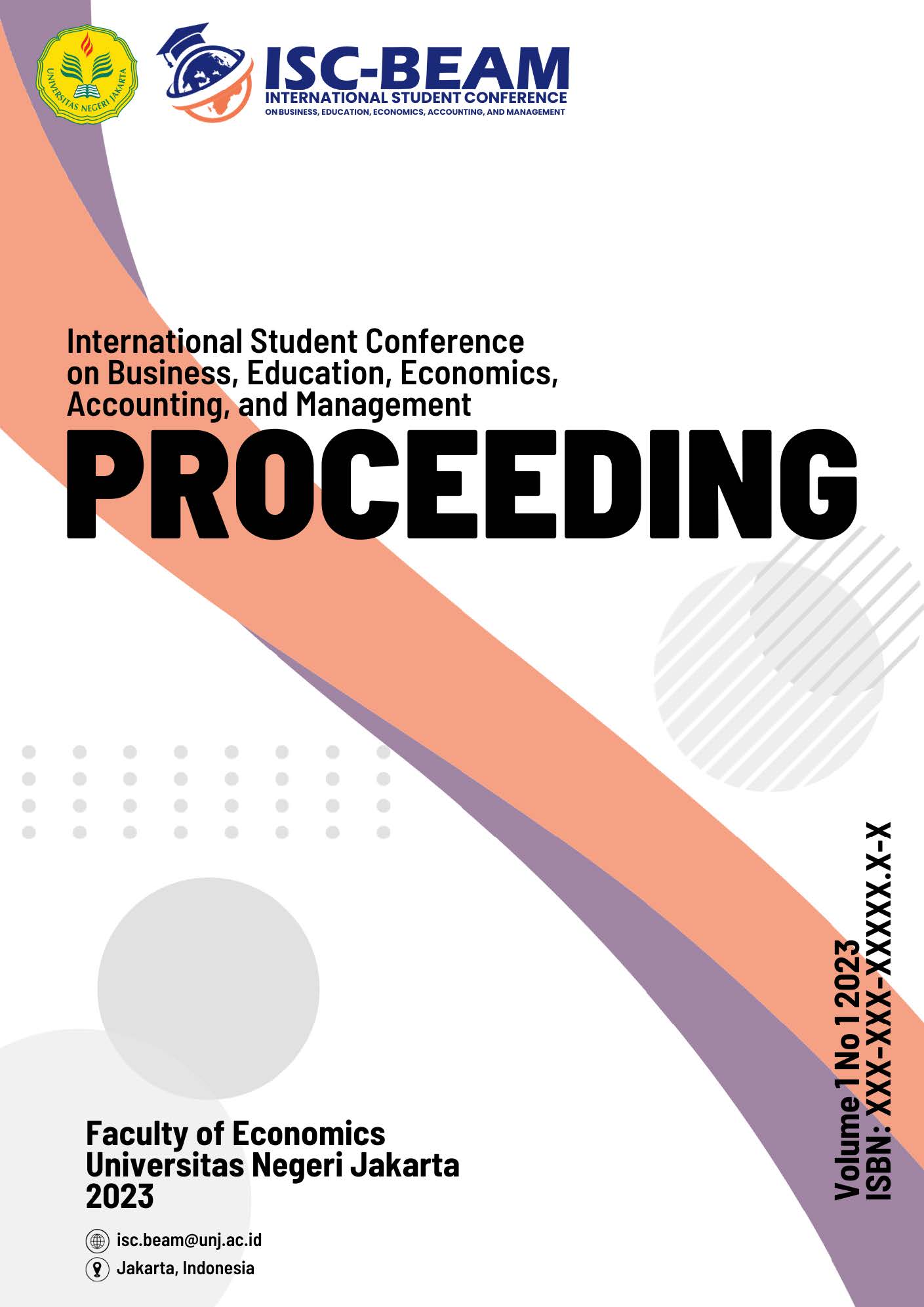Selecting Sustainable Project Portfolio By A Electre Method
DOI:
https://doi.org/10.21009/ISC-BEAM.011.39Keywords:
Sustainable project, Criteria, ELECTRE, MCDMAbstract
Evaluating a sustainable project which encompasses both conventional and sustainability dimensions, stands as a crucial component of a company's strategic pursuit of a competitive edge. To solve this problem, one of the commonly used method, ELECTRE, is used. Once decision-makers, criteria, and the project set have been identified, the analysis focuses on assessing the factors that influence the evaluation process, aiming to pinpoint the most optimal sustainable project. Furthermore, the study incorporates nine criteria for appraising sustainable projects, encompassing both quantitative and qualitative considerations. Ultimately, a numerical illustration is provided to illustrate the practicability of the proposed method
References
Allen, M., Pikalov, A., Werner, P., Jin, F., Cucchiaro, J., & Loebel, A. (2014). EPA-0423-Efficacy of lurasidone in the treatment of agitation associated with acute schizophrenia. European Psychiatry, 29(S1), 1-1.
Alyamani, R., & Long, S. (2020). The application of fuzzy Analytic Hierarchy Process in sustainable project selection. Sustainability, 12(20), 8314.
Bloch, M., Blumberg, S., Laartz, J., 2012. Delivering large-scale IT projects on time, on budget, and on value WWW Document, McKinsey Q (URL http:// www.mckinsey.com/insights/business_technology/delivering_large-scale_it_ projects_on_time_on_budget_and_on_value (accessed 7.7.15)).
Chinnasamy, S.; Ramachandran, M.; Kurinjimalar Ramu, P.A. Study on Fuzzy ELECTRE Method with Various Methodologies. REST J. Emerg. Trends Model. Manuf. 2022, 7, 108–115.
Costantino, F., Di Gravio, G., & Nonino, F. (2015). Project selection in project portfolio management: An artificial neural network model based on critical success factors. International Journal of Project Management, 33(8), 1744-1754.
Fallahpour, A., Wong, K. Y., Rajoo, S., Olugu, E. U., Nilashi, M., & Turskis, Z. (2020). A fuzzy decision support system for sustainable construction project selection: an integrated FPP-FIS model. Journal of Civil Engineering and Management, 26(3), 247-258.
Govindan, K.; Jepsen, M.B. ELECTRE: A comprehensive literature review on methodologies and applications. Eur. J. Oper. Res. 2016, 250, 1–29.
Hatami-Marbini, A., & Tavana, M. (2011). An extension of the Electre I method for group decision-making under a fuzzy environment. Omega, 39(4), 373-386.
Khalili-Damghani, K., & Sadi-Nezhad, S. (2013). A decision support system for fuzzy multi-objective multi-period sustainable project selection. Computers & Industrial Engineering, 64(4), 1045-1060.
Khalili-Damghani, K., Sadi-Nezhad, S., Lotfi, F. H., & Tavana, M. (2013). A hybrid fuzzy rule-based multi-criteria framework for sustainable project portfolio selection. Information Sciences, 220, 442-462.
Ma, J., Harstvedt, J. D., Jaradat, R., & Smith, B. (2020). Sustainability driven multi-criteria project portfolio selection under uncertain decision-making environment. Computers & Industrial Engineering, 140, 106236.
Ma, J., Harstvedt, J. D., Jaradat, R., & Smith, B. (2020). Sustainability driven multi-criteria project portfolio selection under uncertain decision-making environment. Computers & Industrial Engineering, 140, 106236.
Mohagheghi, V., Mousavi, S. M., Antuchevičienė, J., & Dorfeshan, Y. (2019). Sustainable infrastructure project selection by a new group decision-making framework introducing MORAS method in an interval type 2 fuzzy environment. International Journal of Strategic Property Management, 23(6), 390-404.
Mohagheghi, V., Mousavi, S. M., Antuchevičienė, J., & Mojtahed, M. (2019). Project portfolio selection problems: a review of models, uncertainty approaches, solution techniques, and case studies.
Nghiem, T. B. H., & Chu, T. C. (2022). Evaluating Lean Facility Layout Designs Using a BWM-Based Fuzzy ELECTRE I Method. Axioms, 11(9), 447.
Qu, G., Zhang, Z., Qu, W., & Xu, Z. (2020). Green supplier selection based on green practices evaluated using fuzzy approaches of TOPSIS and ELECTRE with a case study in a Chinese internet company. International journal of environmental research and publichealth, 17(9), 3268.
Roy, B. Classement et choix en présence de points de vue multiples. Rev. Française D'informatique Rech. Opérationnelle 1968, 2, 57–75.
Uddin, S., Ali, S. M., Kabir, G., Suhi, S. A., Enayet, R., & Haque, T. (2019). An AHP-ELECTRE framework to evaluate barriers to green supply chain management in the leather industry. International Journal of Sustainable Development & World Ecology, 26(8), 732-751.jei, J. K., Adams, S., & Mamattah, L. (2021). Cloud computing adoption in Ghana; accounting for institutional factors. Technology in Society, 65, 101583. https://doi.org/10.1016/J.TECHSOC.2021.101583
Caison, A. L., Bulman, D., Pai, S., & Neville, D. (2008). Exploring the technology readiness of nursing and medical students at a Canadian University. Journal of Interprofessional Care, 22(3), 283–294. https://doi.org/10.1080/13561820802061809
Jang, M., Aavakare, M., Nikou, S., & Kim, S. (2021). The impact of literacy on intention to use digital technology for learning: A comparative study of Korea and Finland. Telecommunications Policy, 45(7), 102154. https://doi.org/10.1016/J.TELPOL.2021.102154
Madan, K., & Yadav, R. (2018). Understanding and predicting antecedents of mobile shopping adoption: A developing country perspective. Asia Pacific Journal of Marketing and Logistics, 30(1), 139–162. https://doi.org/10.1108/APJML-02-2017-0023






